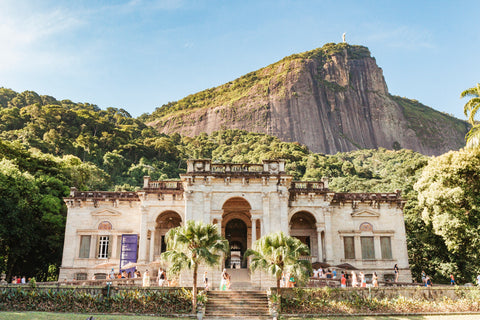5 Green Places to Travel for Plant Lovers

If you’re into houseplants, chances are you’ve planned your weekend trips or summer vacations around what plant life you’re going to see. You’ve contributed to what’s being called ‘botanical tourism’ which could involve everything from visiting a botanical garden, hiking through wilderness to see foliage, or even trekking to find one species of plant! Observing variation in wild flora can be an awe-inspiring experience.
From warm, lush, tropical jungles of South America to cool, conifer forests of the Rockies– nature really is vastly astonishing. If you’re looking to include more greenery into your trip, here’s our top 5 picks for the most unique, and spectacular plant peeping.
1. Costa Rica

A visit to Costa Rica will be exciting for anyone wanting to see a range of plants with the country’s incredible biodiversity. Due to Costa Rica’s geographical position, the country has 12 climatic zones and highly variable ecosystems throughout– which are home to over 10,000 plant species! Traversing the dense cloud forests (like Monteverde), you’ll encounter the most orchid species in the world. Then over on the southeast coast, the Gandoca-Manzanillo Wildlife Refuge contains rainforests, beaches, and wetlands– so expect to see native palms, mangroves, and even some endangered species.
2. South Florida

It’s more than just beaches and the Everglades– a visit to the Miami-area provides so much to do and explore for plant lovers. The tropical vegetation is vast. Even in the most densely populated areas with countless high rise buildings, Monstera and Philodendron plants are overflowing– creating a new meaning to concrete jungle.
For any plant lover visiting South Florida, a day-trip to Fairchild Botanical Garden is an absolute must. The huge grounds include a rare plant house, a misty tropical rainforest (the only one in the US), exotic fruits, and a crowd-favorite, rainbow eucalyptus trees.
3. Japan

Seeing cherry blossoms (sakura) in full bloom is a sight to behold. There are hundreds of cultivars, and the pale pink blooms make a gorgeous display in early spring. Across the country, there are many spots to catch the fleeting flowering season. Mount Yoshino has 30,000 trees that were planted over 1000 years ago! Then there’s Tokyo’s Nakameguro neighborhood– where a Sakura Festival takes place every year celebrating all things cherry blossom. Imagine strolling petal plush, tree lined streets along the river while sipping sakura tea.
If you can’t make it to Japan, check out the cherry blossom season in Washington DC (for the National Cherry Blossom Festival) or in New York City at the Brooklyn Botanic Garden.
4. Brazil

Many houseplants trace origins to South America with the country’s viable conditions of humidity, warmth, and sunniness. Brazil, with the help of the abundant Amazon, is the most biodiverse country in the world. More specifically, there are 46,000 discovered plant species, the majority of which are native only to Brazil.
Taking a stop in Rio de Janeiro to visit the Jardim Botânico is a bucket list location for plant lovers worldwide. Nestled at the base of a mountain, the botanical gardens feature an Amazonian section, a sensory garden, medicinal plants, and huge aquatic plants.
5. Singapore

Blending city life and plant life, Singapore is the ultimate eco-destination and it’s earned the moniker “city in a garden”. It’s been recognized as one of the top sustainable cities in the world– and when we say “green”, we mean it’s actually quite visually green too! As soon as you land in Singapore, you’ll notice even the airport has living plants integrated into the design. On the streets, buildings come to life with foliage-laden exteriors.
There are many sights to see, but we recommend heading over the Gardens by the Bay. This place of course has room after room of botanical exhibits, but it also features super innovative green technology. The city also boasts gorgeous parks and nature trails. Another favorite is the Singapore Botanic Gardens which is listed and protected as a UNESCO world heritage site.

As with any destination and ecotourism, remember to respect protection and conservation of the flora and fauna. If you have the privilege to travel, it’s imperative to remember that it is a privilege to be able to explore (especially among threatened or endangered life). Never take plants from the wild, never feed animals, and don’t contribute litter. That’s the bare minimum, but taking mindful measures will avoid compromising nature’s delicate ecosystems. And In the words of the National Forest Service, “leave no trace”.